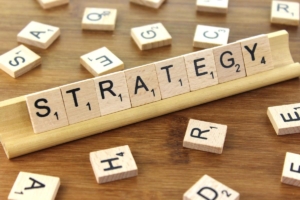
Why Pay Special Attention to Strategic Decision Makers?
In all this talk about reaching decision makers, it’s easy to think that everyone in a decision making position is alike. While most decisions have some element of risk management or process efficiency involved, they’re not necessarily strategic decisions.
So let’s talk for a moment about the difference between regular day-to-day decisions a manager might have to make, and strategic decisions.
What are strategic decisions?
In an article published in the Harvard Business Review in 2013, Phil Rosenzweig suggests that decisions can be grouped into four “fields,” with most decisions being made in the “making judgments and choices” field. Choosing from a list of options can rarely be called “startegic decision making.” [Tweet this!] These decisions are usually selecting the best product or resource to accomplish a goal, but without the ability to change or improve the product or resource. For example, in an election you can choose from the candidates on the ballot. Your ability to influence the outcome only goes as far as selecting your preferred candidate, or selecting none.
At the opposite side of the spectrum are decisions that are “managing for strategic success.” In this field, decision making becomes strategic and much more complex. There are interdependencies to consider, and in this respect these decisions are much more like being the candidate. Positioning yourself one way turns some voters on to your message, while turning others off; taking one action affects multiple other actions that will need to be taken in time. This is where strategy comes in.
What are strategic decision makers?
Managers usually have decision-making authority within their business unit, but a strategic manager will ask if this purchase affects other departments:
- IT – will the new purchase need to integrate with existing systems?
- HR – will the new purchase require employees to undergo training?
- Finance – How will this purchase be paid for?
- Logistics – Are there other purchases planned that would impact this purchase?
- PR – Will this purchase have brand reputation implications?
- Customer Service – How will this purchase help improve customer service?
Strategic decision makers are usually C-level executives, who don’t just make day to day decisions on what decisions need to be made to execute against goals, they define they goals, and the strategy to achieve them. In this regard, strategic decision makers not only need a holistic view of where their organization is, they have their eye on the horizon and are plotting the course.
If you’re looking for strategic decision makers to focus your sales or marketing efforts on, look for titles in the C-suite like:
- Chief executive officer
- Chief operations officer
- Chief marketing officer
- Chief technology officer
- Chief revenue officer
- Chief digital officer
You can look for other titles like president, or senior vice president or executive vice president responsible for the functions listed in the C-suite list above.
Why you should pay special attention to them.
Strategic decision makers can be your best friend and your worst enemy, sometimes at the same time. As a friend, a strategic decision maker will offer the best understanding of how your product or service will be implemented across their organization; they’ll set expectations around timelines, scale of adoption and future needs. On the other hand, their broad understanding of their organization may lead them to be a little slower and steadier than you’d like, knowing that there are dependencies at stake that shouldn’t be rushed.
When are you likely to run into strategic decision makers?
Strategic decision makers are generally involved:
- at the start of the process, when interdependencies are being discussed and a list of needs is being created for the solution.
- at the end of the process, when the customer is mapping out where your product touches and influences other business units.
The influence of the strategic decision maker at the start of the process will generally remove obstacles for you. Any internal discussions that might derail your sale have already happened and your prospect understands their own organization’s needs. Since your prospect will have a better understanding of what will or won’t work for them – and more specifically, what their manager will or won’t sign off on – your discussions will be much more productive.
If the strategic decision maker isn’t involved until late in your sales cycle, there’s a good chance that your prospect may have negotiated beyond their authority, or didn’t know about something that may throw a wrench into the deal. Maybe your target has an SLA with another organization that impacts how your solution can be deployed. Maybe your platform integrates with a system they’re about to sunset under a planned obsolescence schedule. Either way, that knowledge would have helped you earlier in the sales cycle.
But wherever and however you find the strategic decision makers in an organization you’re prospecting, paying attention to them, who they are and what they’re able to influence, is vital to successful selling.
Winmo includes regularly updated contact information that can cut down the amount of time you spend working your way up the chain to a strategic decision maker.
Check it out for yourself with a free demo now!




